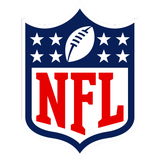
The New York Rangers were busy making offseason moves even before the Stanley Cup Final ended.
Team president and general manager Chris Drury traded away veteran Chris Kreider last week, and he’s started making headway on his restricted free agents, signing Matt Rempe, Juuso Pärssinen and Matthew Robertson in recent days. New York is likely to remain active this summer as it seeks to improve on a disappointing 2024-25 season.
Advertisement
What comes next as we head into draft week and the start of free agency on July 1? Here are some tidbits from speaking with sources around the league:
• The Rangers and restricted free agent Will Cuylle’s camp have been in talks. Signing him has to be one of New York’s most significant priorities this summer. He’s 23 and is coming off a 45-point season, all while bringing a level of physicality and edge that matches what Drury wants his team to have.
AFP Analytics projects a three-year deal for Cuylle with an average annual value of $3.435 million. Evolving-Hockey has a similar projection: three years, $3.195 million. If New York were to try to extend Cuylle on a longer-term deal, the AAV would have to go up.
The chances of Cuylle receiving an offer sheet presumably decreased after the Kreider trade. Part of New York’s reason for moving the veteran winger was to create cap flexibility in case another team presented one of its restricted free agents with a compelling offer sheet.
When the St. Louis Blues signed Edmonton Oilers restricted free agents Philip Broberg and Dylan Holloway last summer, Edmonton was in a tight salary cap situation that made it hard for them to match. The Oilers let both walk in exchange for the draft compensation that comes with losing a restricted free agent in specific salary ranges.
Teams generally only use offer sheets when they believe there’s a legitimate chance of getting a player. Currently, the Rangers’ added cap space can serve as a safeguard. To continue having that protection, they’ll need to either get a Cuylle extension done or set aside enough cap space through free agency to make sure they can match a potential offer sheet. That way, a team won’t be able to catch them in a vulnerable spot as the Blues did with Edmonton.
• New York still has to decide what to do with its first-round pick in next week’s draft. The Rangers owe either this year’s first-rounder (No. 12) or their 2026 first to the Pittsburgh Penguins. The Penguins got the pick from the Vancouver Canucks, who received it from the Rangers in the J.T. Miller trade.
Advertisement
There has been considerable league-wide discussion about offer sheets in the wake of the Blues’ success with Broberg and Holloway. Colleagues Michael Russo and Chris Johnston wrote a good story about it in April. If the Rangers decide to use this year’s pick, you can write off any possibility of the team getting involved in the offer sheet game. To sign a player to an offer sheet in the $4.68 million to $7.02 million range this summer, a team must have its own 2026 first- and third-round picks, which would go to the RFA’s former team if it doesn’t match the contract.
Should New York draft at No. 12 next week, it won’t have the required first to take a big swing. The Rangers also don’t have their 2026 second-round pick, eliminating the possibility of them trying to sign someone in the AAV bracket below.
The Rangers would keep the offer sheet possibility open if they forfeit their 2025 first-round pick, but they might also not have the cap space needed to sign someone in that salary range, especially if they don’t move out any other contracts. There’s a reason offer sheets aren’t standard: They’re hard to pull off.
The deadline to decide on the draft pick is 48 hours before the draft, which is at 7 p.m. (ET) Wednesday.
• The Rangers have been exploring the trade market for K’Andre Miller, as they were during the regular season, per league sources.
Miller, one of the top names on Chris Johnston’s offseason trade board, is due a raise in restricted free agency from the two-year, $3.872 million bridge deal he signed before the 2023-24 season. Still only 25, he’s a big (6 foot 5), strong-skating defenseman who, at his best, can contribute offense. He had only 27 points in 74 games this past season but has had as many as 43 in a season (2022-23). He has also demonstrated his ability to play well over 20 minutes a night, averaging 21 minutes, 27 seconds in his career.
Advertisement
Trading Miller would be a risk, given his age and the potential he has shown at the NHL level. Should the Rangers move him, they would get a package of assets in return and gain some cap flexibility since they’d no longer need to pay for Miller’s raise.
However, they’d also need to replace a key defenseman on their roster, potentially through free agency. Vladislav Gavrikov, Ivan Provorov and Aaron Ekblad are the top defensemen on the unrestricted-free-agent market, per Johnston’s UFA Big Board. All are at least three years older than Miller and will likely command long-term, high-cap-hit deals. That would eat into New York’s precious cap space.
• Mika Zibanejad’s wife, Irma, told a Swedish newspaper that coach Mike Sullivan visited their home in Sweden. Zibanejad was consistent throughout the season in his stance that he wanted to be on the Rangers. He has complete control over his situation, with a no-movement clause that is essentially buyout-proof due to the signing bonus structure.
All the tea leaves point to him being back, and it makes sense to have him back on J.T. Miller’s wing, where he had some success last season.
• The Rangers signed restricted free agent Matthew Robertson to a two-year extension (two-way on the first year, one-way league minimum on the second, per a league source).
Robertson, a second-round pick from 2019, made his NHL debut at the end of the 2024-25 season, playing the final two games of the Rangers’ season after the team was eliminated from playoff contention.
(Top photo of Will Cuylle and K’Andre Miller: Bruce Bennett / Getty Images)
This news was originally published on this post .








Be the first to leave a comment